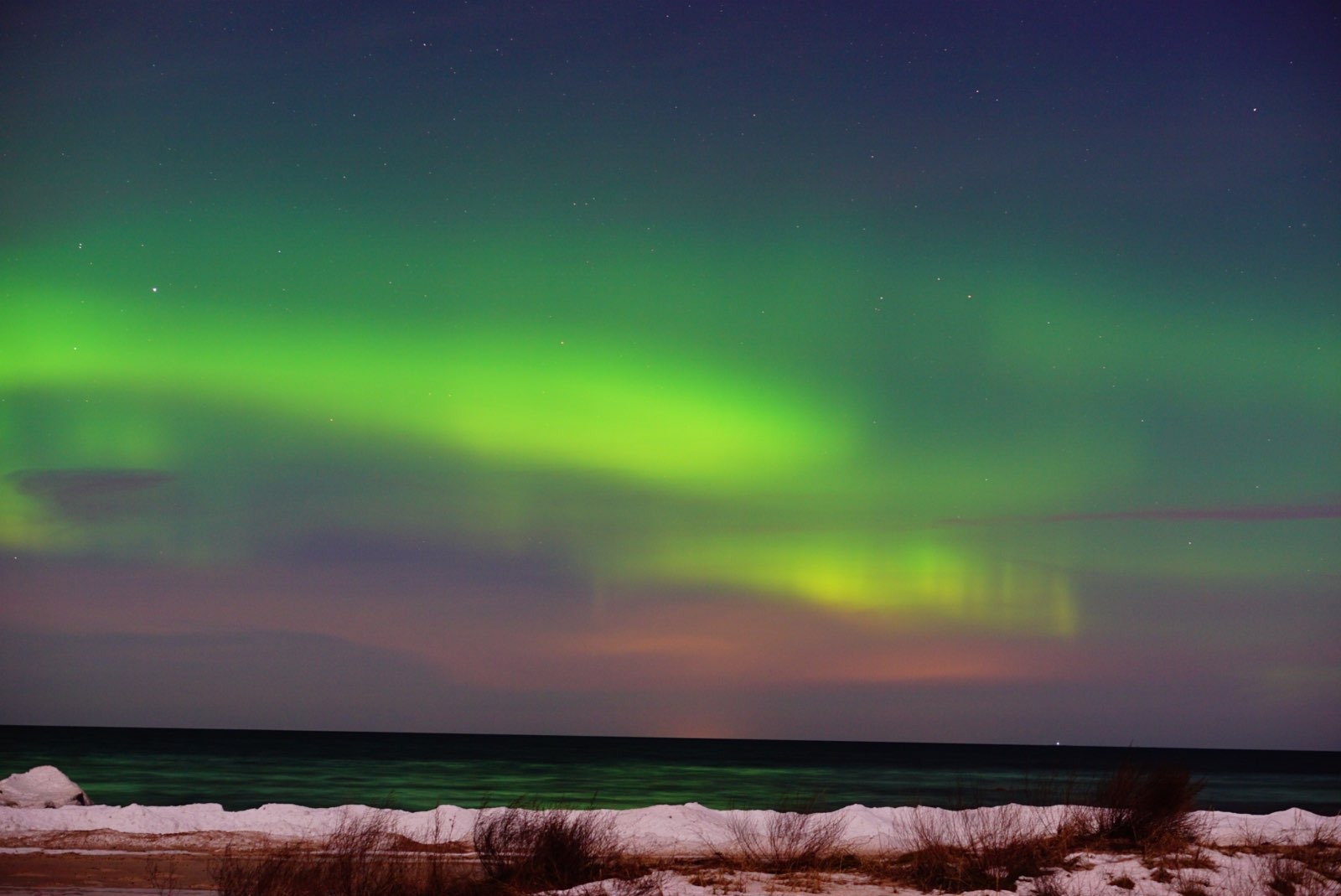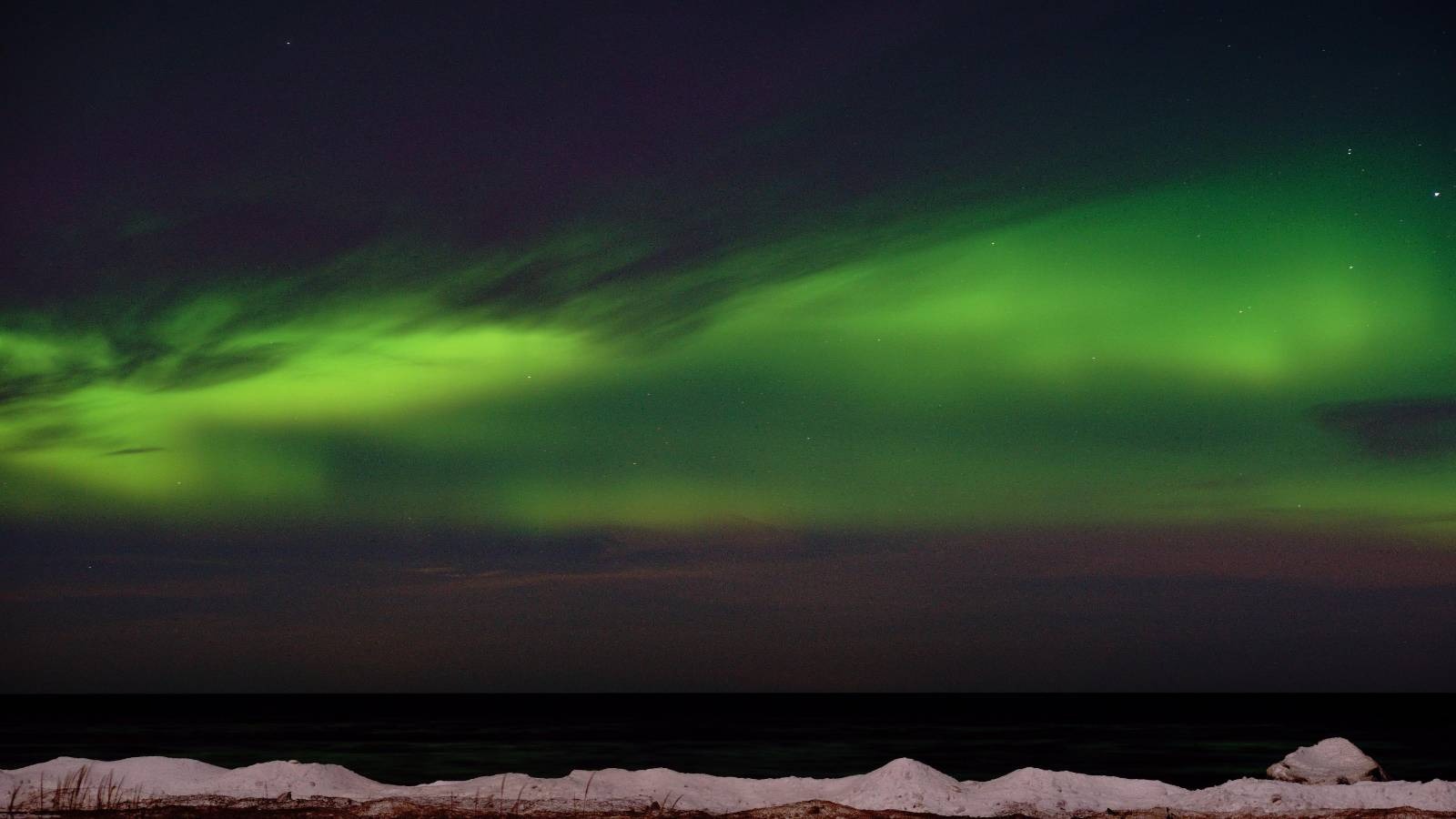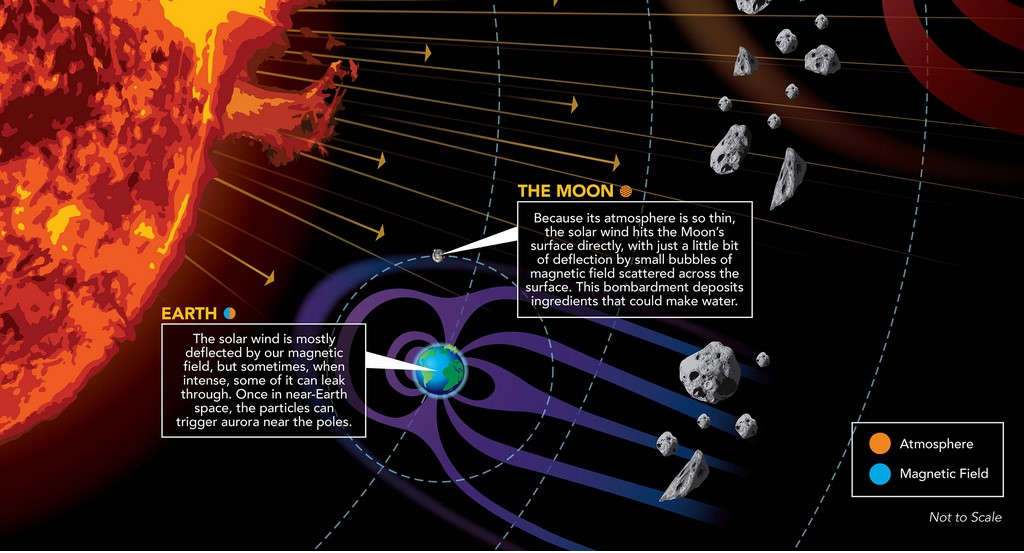Hunting Northern Lights in Estonia : How to find them ?
Reading time : 6 min
Yes, it is possible to see the Northern Lights in Estonia, it is not always necessary to go to the Arctic Circle to see them. However I must admit, the further north you go the easier it is to see them, and the further south you go the more challenging it becomes. That said, it’s a perfect challenge to occupy your Saturday evenings!
Let’s start with the basics: the northern lights are those that can be seen in the northern hemisphere, and the southern lights are those in the southern hemisphere. In fact, the general term is polar light. However, in this article, we will be talking about the northern lights, which I know better than the southern ones.
How do polar lights form?
The sun is the origin. This star emits energetically charged particles (protons and electrons). These particles are ejected into space because of the turbulent activity on the sun: this is the solar wind.
When the solar wind approaches the Earth, it collides with the Earth’s magnetic field. This prevents it from eradicating all forms of life on our beloved planet.
However, a very small percentage of these particles still manage to cross the magnetic field and come into contact with the atoms that make up the upper part of the atmosphere.
And then BAM, polar lights appear. The collision between all these particles in the upper atmosphere results in this bright and colourful spectacle in the sky.
In concrete terms, they appear for a few moments, then disappear and reappear. If you are lucky, it can last for several hours (but probably more above the Arctic Circle), otherwise a few minutes.
To see them in Estonia :
Basic requirements
It’s always good to remember that there is clearly a luck factor in the quest for this crazy sight, and nothing can ever guarantee that you will see one.
- First of all there is a time during the year that is favorable for their appearance: from November to March.
- Of course, it has to be night time and preferably between 8pm and 1am.
- There should be no light pollution or as little as possible. For this reason, you should stay away from the big cities and not hesitate to go in the middle of nowhere in the dark. The full moon is also a problem.
- You can either go to the seaside to have a clear view, or you can go to the countryside from a higher point in terms of altitude (yes I know, Estonia is not famous for its mountains but still)
- As for the weather, you need a clear sky, otherwise, clouds will hide the show from you (that would be a shame)
- You also need to be patient and wear warm clothes, otherwise you’ll go back home before you’ve seen anything because of the cold and your purple limbs. Really. Put on thermal tops and tights, a thick jumper, your best coat, your hat and gloves.
But then, how to know in advance that this phenomenon is going to happen?
The first indicator to look at is the KP index, which measures the disturbance of the earth’s magnetic field on a scale of 0 to 9. To see the 3 day forecast in Estonia, see here. This gives you an idea 🙂
The higher this indicator is, the more likely you are to see northern lights. For Estonia you can expect to see those from KP 5 or more if all the conditions are right.
You can then consult a detailed weather forecasting site to assess where it would be wise to go, especially somewhere where the sky will not be cloudy, rainy or snowy.
Once there, you can continue to study the KP index in real time, using this site.
Another indicator you can keep an eye on is the BZ, which represents the magnetic orientation of the solar wind. Simply put, you want this value to be as negative as possible, and you can see it in real time here. This will allow you to estimate whether your chances are high or not in real time.
That time we managed to see it.
So beginner’s luck or pure talent, the first time we went in search of the Northern Lights, we saw one!
It was at the end of January 2022, and a KP index of 5 was forecasted.
When we got there at about 9 pm, the index was only 3 or 4. We had driven more than an hour from Tallinn to get to a place that was not polluted by light. By the way, if like us you are trying to see northern lights by the seaside, be careful not to be directly facing Helsinki, the Finnish capital, which could also bother you.

After parking the car facing the sea, we went out to scout the area and see where to put the tripod etc. Because of the cold, we went back to the car to wait. And there we waited… around 3 hours. And when we started to think we wouldn’t see anything at all, BAM.
The beginning of an aurora was taking shape and oscillated between green, yellow and blue, just above the Baltic Sea. It’s really magical when you are in front of this spectacle, the light movements dance in the sky for the greatest pleasure of our eyes.

But, after a few minutes, a cloud came to cover the show 🙁
So we didn’t give up and thought that we would venture further, in search of a less cloudy place. We drove another 40 minutes, but nothing. Well, a few minutes of northern lights on the first try was not bad!
The following failure (and what to learn from it)
The next time, we were not prepared at all. In fact, we were just having a drink in a bar when we realised that the KP index was high. So we went in a rush and went to the nearest place that seemed far enough from the center of Tallinn. It was on the beach of Pikakari. Well, big mistake, not only were we bothered by the lights of Tallinn but also by those of Helsinki and on top of that, the sky was cloudy at times.
Sometimes the Northern Lights are not visible to the naked eye, but a good camera will show them, which was the case this time even if it was very shy.
In short, light pollution and clouds are your worst enemies.
The last word
It would be a lie to encourage you to go to Estonia in order to see the Northern Lights. If you want to increase your chances of seeing them, you should go just above the Arctic Circle. This could be in the northern part of the Scandinavian countries, northern Russia, Iceland, northern Canada, Alaska, or Greenland.
However, if you happen to be in Estonia in winter, you can see them with a little effort!
For those who are lazy to understand or search, there are guided tours that are often led by northern lights photographers. They will pick you up in a van at your door, take you to wherever the chances are best and then bring you back. Prices vary and remember that just because you pay doesn’t mean you’re guaranteed to see them.
I hope this article will help some of you or that it will at least take you out of yourself 🙂
See you soon!
